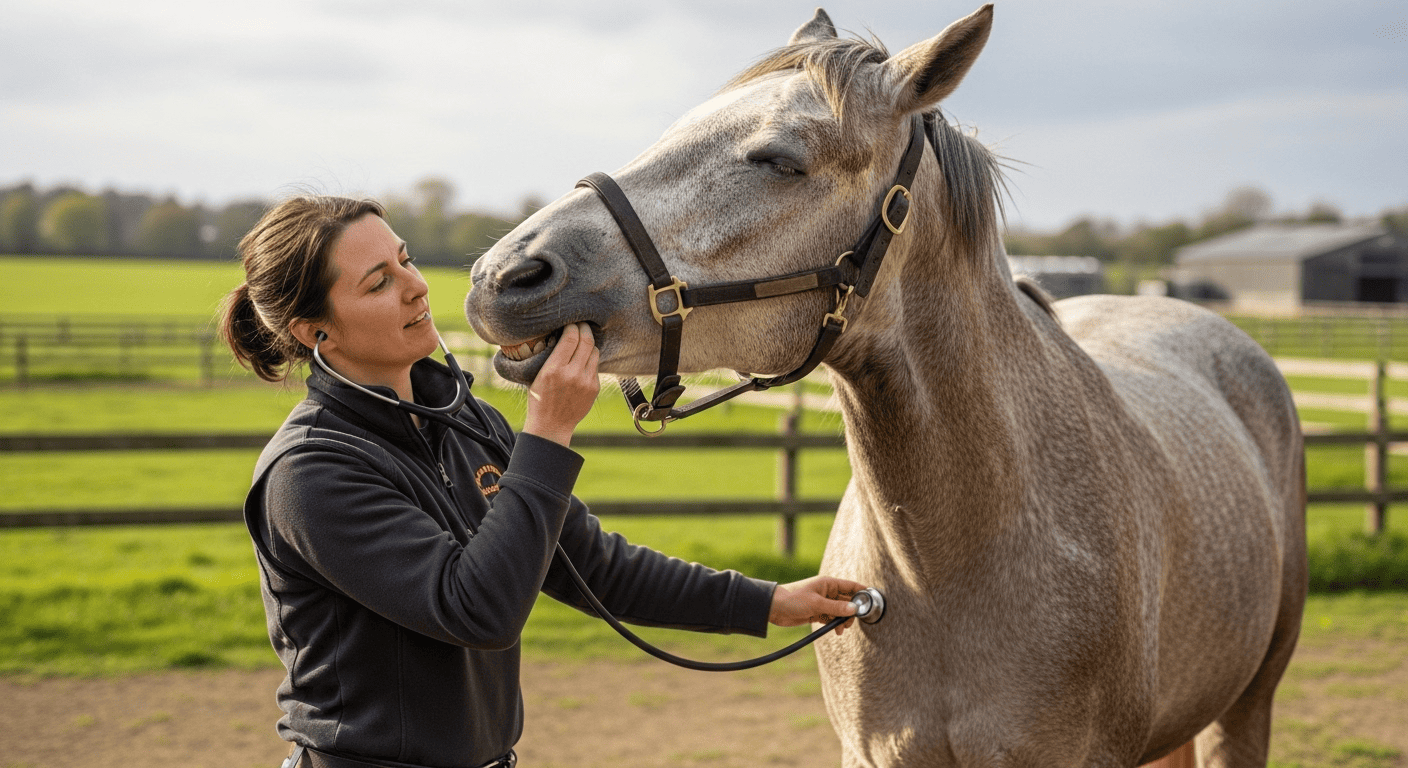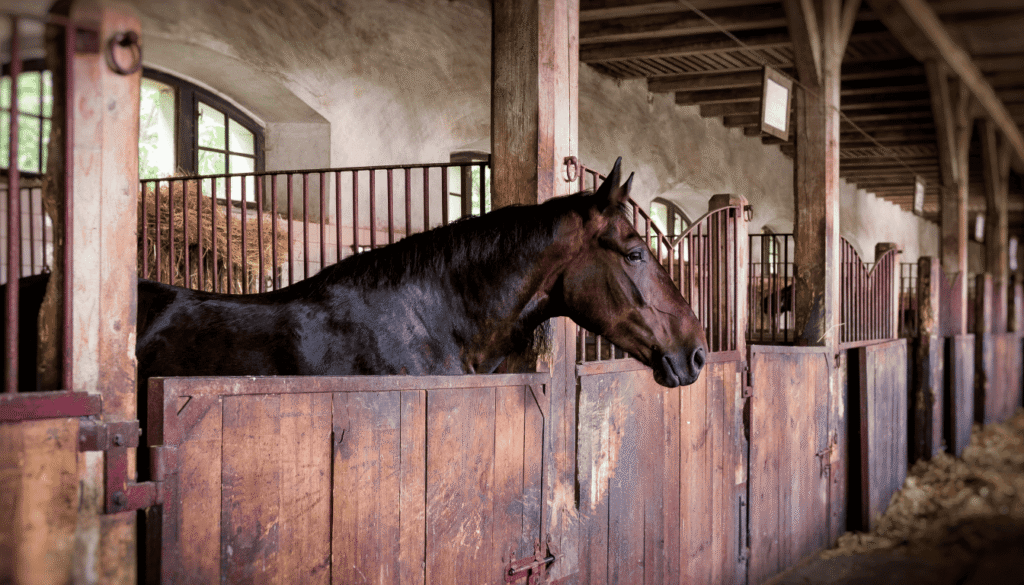As a dedicated horse owner, your prime concern is the well-being and good health of your beloved equine companion. Horses, like any other animals, are susceptible to certain diseases that can compromise their overall well-being and good health. Nevertheless, with effective preventive care and knowledge, most of these illnesses can be prevented or cured effectively.
In this article, we’ll delve into some of the most common horse diseases, how to recognize their symptoms, and most importantly how to prevent them from affecting your horse.
Understanding Common Horse Diseases
Horses, depending on how big they are, how energetic they are, and where they live, suffer from a vast array of health concerns. Some of them are more common than others, and it is important for any horse owner to be aware of their causes, symptoms, and prevention. Here are some of the most common horse diseases:
1. Colic
Colic is quite likely the most common and critical horses’ illness. Any kind of pain in the abdomen is referred to as colic, which has any range of causations. Colic ranges from mild to life-threatening like intestinal torsion or impaction.
Symptoms of Colic:
- Restlessness
- Rolling or pawing
- Staring at the abdomen
- Sweating
- Loss of appetite
Prevention Tips:
- Make sure your horse is on a normal feeding schedule.
- Do not drastically alter diet or exercise routine.
- Provide unlimited access to fresh, clean water.
- Regular deworming and routine veterinary visits.
2. Laminitis (Founder)
Laminitis is an inflammatory disease of the sensitive tissues of the hooves that typically results in permanent damage. It is typically caused by carbohydrate overload or obesity but can also arise due to infection, trauma, or stress.
Symptoms of Laminitis:
- Lameness or limping, especially in the front hooves
- Hoof heat
- Posture alterations, for instance, leaning back
- Digital pulse elevation (perceptible in the hooves)
Prevention Tips:
- Avoid sudden changes in diet, particularly in horses that have access to green pastures.
- Regular weighing and body condition checking to prevent overweight syndrome.
- Regular visits by the farrier and trimming to maintain proper hoof balance.
- Make sure your horse is well housed and low-stress in a proper environment.
3. Equine Influenza
Equine influenza is a contagious respiratory disease induced by the H3N8 type of flu virus. It is airborne, usually in conditions where horses are in close proximity, such as stables or barns.
Symptoms of Equine Influenza:
- Fever
- Cough
- Nasal discharge
- Loss of appetite
- Lethargy
Prevention Tips:
- Keep your horse up to date on shots, especially for influenza.
- Quarantine new horses before bringing them onto your stable.
- Minimize contact with other horses during flu outbreaks.
- Practice good stable hygiene, including frequent cleaning of equipment and bedding.
4. Tetanus
Tetanus is a bacterial toxin infection entering the body through injury. Horses are particularly at risk due to their regular exposure to the outside and sharp objects, such as nails or wire. Anaerobic environments, such as deep wounds, promote bacterial growth.
Symptoms of Tetanus:
- Muscle stiffness and spasms
- Difficulty eating and swallowing
- Sensitivity to light and sound
- Fever and perspiration
- Drowsiness
Prevention Tips:
- Vaccinate your horse for tetanus.
- Disinfect and clean cuts or wounds the instant they happen.
- Practice good wound care, including veterinary treatment immediately for deep or bad cuts.
- Provide a safe environment that is free from dangerous materials that could lead to injury.
5. Strangles
Strangles is a highly contagious bacterial infection caused by Streptococcus equi, mostly affecting young horses. It’s also referred to by the symptom of abscesses and swelling of lymph nodes, usually in the neck and jaw area.
Symptoms of Strangles:
- Fever
- Swollen lymph nodes
- Thick nasal discharge
- Difficulty in swallowing
- Depression
Prevention Tips:
- Quarantine horses in the event of an outbreak.
- Vaccinate against strangles, although its efficacy is in dispute and must be discussed with your veterinarian.
- Practice good hygiene, including regular cleaning of equipment, stalls, and water sources.
- Avoid equipment sharing, such as grooming equipment and buckets, with other horses.
6. Equine Cushings Disease (PPID)
Equine Cushing’s Disease (or PPID) is a hormonal disorder of imbalance, typically occurring in older horses. It is a hyperproduction of cortisol due to an insufficient pituitary gland.
Symptoms of Equine Cushings Disease:
- Excessive sweating
- Shedding (long, curly coat that will not shed)
- Laminitis
- Weight loss
- Excessive thirst and urination
Prevention Tips:
- It is incurable, but with early detection and treatment, it can be helped.
- Provide a balanced diet conducive to healthy weight management.
- Monitor for early warning signs, particularly in older horses, and book regular vet visits.
- Manage stress and encourage regular exercise.
How to Protect Your Horse from Common Diseases
1. Vaccination
The best prevention of most contagious horse diseases is by vaccination. Ongoing vaccination of your horse against diseases such as equine influenza, tetanus, strangles, and rabies is crucial to maintaining their health. Be sure to check with your veterinarian to develop a vaccination plan customized to your horse’s individual circumstances and surroundings.
2. Proper Nutrition and Diet
A good diet that is well balanced and loaded with the appropriate nutrients is crucial to maintain your horse’s immune system strong and healthy. Horses are herbivores, and they require a diet of good forage, hay, and pure water. You can supplement their diet with grains, vitamins, and minerals as advised by your vet.
3. Routine Veterinary Care
Routine check-ups by a qualified veterinarian are key to avoiding disease. Your vet can perform routine blood work, vaccinate, and check for parasites or other issues. Getting issues early on will prevent bigger problems later.
4. Good Stable Management
Maintaining the stable well-ventilated and clean helps prevent respiratory illnesses like equine influenza and strangles. A clean bed, water troughs, and grooming equipment minimize exposure to harmful pathogens. Provide your horse with sufficient space to exercise because stress and lack of exercise lead to colic and other illnesses.
Conclusion
Caring for your horse’s health entails being proactive, and that includes understanding horse diseases and how you can prevent them. By staying informed about your horse’s health needs, practicing good hygiene, giving him a balanced diet, and having his vaccinations current, you can ensure a long, healthy, happy life for your horse.
If you have concerns about the health of your horse or need information on disease prevention protocols, don’t hesitate to discuss with your veterinarian. Regular visits to the vet, alongside good care in the home stable, can maintain your horse in top shape for years to come.

Dr.Vala Siddharajsinh Raysinhbhai is a certified Animal Husbandry Technician, holding a diploma from Kamdhenu University, India. His expertise covers livestock breeding, nutrition, disease control, and animal welfare. Passionate about rural veterinary care, he actively contributes to animal health awareness and sustainable livestock management through both fieldwork and educational content.





